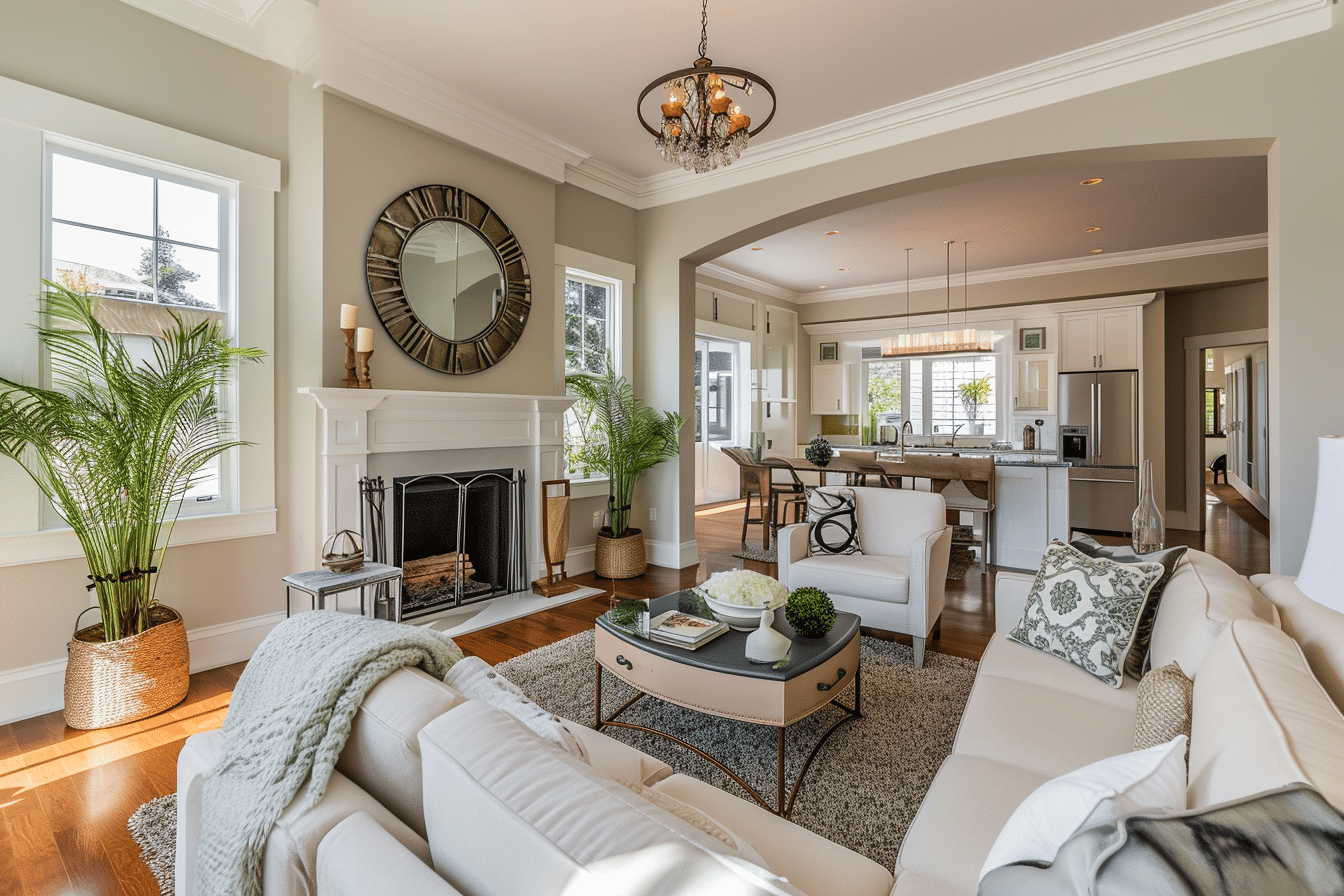
Cost-effective Home Staging Strategies: Quick Tips for Budget-Friendly Makeovers
Home staging is an essential element in the real estate process that helps homeowners showcase their property’s best features and appeal to potential buyers. Conducting cost-effective home staging can offer sellers a competitive edge in the market without breaking the bank. This article will provide ways to stage a home in a wallet-friendly manner, ensuring that the house is welcoming, stylish, and, most importantly, sells quickly.
The basics of home staging involve understanding the target buyer’s wants and needs and working to emphasize the home’s best features. This includes decluttering, neutralizing personal items, focusing on lighting, and strategically placing furniture and décor to create open and inviting spaces. Employing cost-effective design and décor tips, as well as strategies to enhance key areas of your home, will further improve the appeal to potential buyers.
Deciding between DIY and professional staging can be tricky, but both options can be cost-effective with proper planning and implementing the right techniques. In addition, effectively managing the costs of home staging, and marketing your staged property will ultimately help make the selling process easier and more profitable.
Key Takeaways from Cost-Effective Home Staging Strategies
- Home staging elevates the presentation of your home while keeping costs low
- Focus on decluttering, lighting, and space utilization to appeal to potential buyers
- Managing costs and effective marketing improves the selling process and profitability
The Basics of Home Staging
Understanding Home Staging
Home staging is the process of preparing a home for sale by making it more attractive to potential buyers. In a competitive real estate market, staged homes tend to stand out and can draw in more interested parties. It typically involves decluttering, depersonalizing, cleaning, and optimizing the space to showcase the property’s best features.
Some common home staging techniques include:
- Removing personal items and photos
- Neutralizing paint colors
- Updating fixtures
- Rearranging furniture
- Adding appealing accents and accessories
Benefits of Staging Your Home
There are several reasons why home staging is considered a cost-effective strategy for selling a home.
Faster sale: Staged homes often sell more quickly compared to homes that are not staged. By presenting a well-maintained and visually appealing home, buyers are more likely to make an offer.
Higher offers: Since staged homes show better and create a positive impression, they often receive higher offers from potential buyers.
Increased interest: Home staging can create buzz and generate interest in your property, leading to more showings and, ultimately, a faster sale.
Better online presence: Since most home buyers search online for their new homes, having well-staged photos of your property can make your listing stand out amongst the competition.
By investing in home staging, sellers can potentially see a quicker sale and a greater return on their investment. Although it might require some initial effort and cost, the benefits can far outweigh the expenses in the long run.
Preparing Your Home
Decluttering for a Spacious Look
One of the most effective ways to create a welcoming and spacious environment is to declutter your home. Start by going through each room and removing any unnecessary items. Less is more when it comes to home staging. Consider using the 4-Box Method to organize your belongings into categories: keep, toss, donate, and store. This process will help potential buyers visualize their own belongings in the space more easily.
Deep Cleaning for a Sparkling Space
Once you’ve decluttered the space, it’s time to give every inch of the house a thorough deep clean. Pay extra attention to details like baseboards, windows, and grout lines. A sparkling space is sure to impress potential buyers. Don’t forget to clean hard-to-reach areas like ceiling fans and air vents. Create a cleaning checklist so that no area is overlooked during your deep clean.
The Art of Depersonalization
Homebuyers want to imagine their family living in the space, not yours. Start the depersonalization process by removing any personal items such as family photos, wall art, and collectibles. If possible, place these items in storage until the selling process is complete. Additionally, remove any potentially controversial items, such as political or religious decor, to ensure the space is neutral and inviting for every potential buyer.
Minor Repairs and Maintenance
Now that your home is decluttered, clean, and depersonalized, turn your attention to addressing any minor repairs and maintenance issues. Take care of things like fixing leaky faucets, patching holes in walls, and replacing burnt-out light bulbs. Tackle these tasks room by room and create a maintenance checklist to help you stay organized.
| Room | Task |
|---|---|
| Living Room | Fix squeaky floorboards |
| Kitchen | Clean exhaust fan |
| Bathroom | Repair water damage |
| Bedroom | Touch up paint |
By following these cost-effective home staging strategies, you’re on your way to presenting your home in the best possible light, maximizing its potential, and attracting the right buyers.
Design and Decor Tips

Choosing the Right Decor
When it comes to cost-effective home staging strategies, selecting the right decor is crucial. Focus on neutral colors and versatile pieces that can easily fit into various design styles. This approach will appeal to a wider range of potential buyers. For example, a simple yet elegant area rug or a classic mirror can make a significant difference in the overall appearance of a room.
Optimizing Lighting
Lighting plays a significant role in setting the mood of a space. To create a welcoming ambiance, consider using a mix of ambient and task lighting. Ambient lighting provides overall illumination, whereas task lighting helps in specific activities like reading. Here are some cost-effective lighting tips:
- Use energy-efficient LED bulbs – they last longer and consume less electricity
- Install dimmer switches to control the intensity and set the mood
- Make use of natural light by keeping windows clean and clutter-free
Color Schemes for Broad Appeal
A well-thought-out color scheme can make a world of difference in home staging. Generally, it’s best to stick with neutral colors like beige, gray, or off-white. These shades create a clean and fresh canvas, allowing potential buyers to visualize their own furnishings and decor.
However, don’t shy away from adding a pop of color here and there to create visual interest. A colorful throw pillow or an artwork can do wonders and make a space look more inviting.
Accessorizing on a Budget
Accessories can dramatically enhance the look of a room without breaking the bank. Here are some budget-friendly ideas to add personality to your space:
- Shop at thrift stores or garage sales for unique and affordable finds
- Repurpose old items to create new decor pieces – like turning a ladder into a shelf
- Use plants as a natural and affordable way to bring life to a space
Remember to be strategic when accessorizing: don’t clutter the space, and balance the decor elements throughout the room. By incorporating these design and decor tips, your home will look beautiful and appealing without making a significant dent in your wallet.
DIY vs Professional Staging
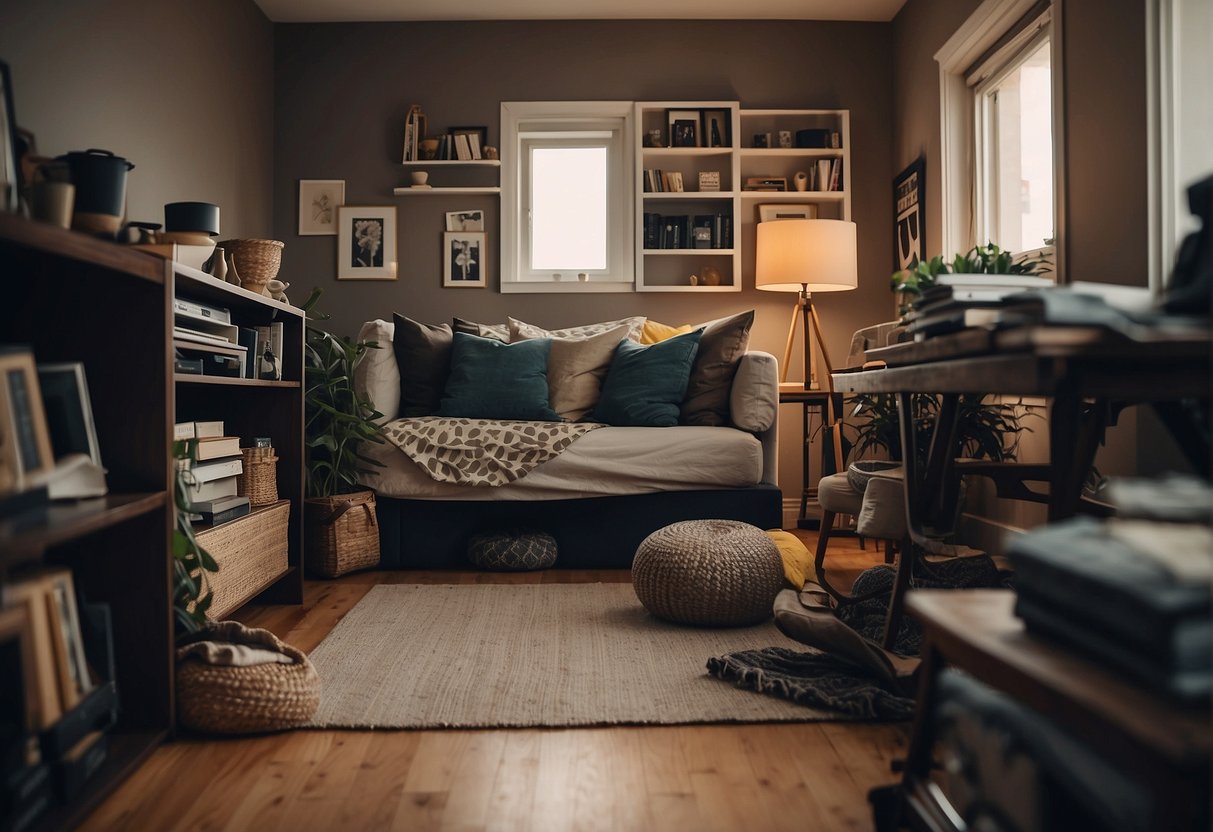
When to DIY Stage
Deciding whether to DIY (do-it-yourself) stage your home or hire a professional stager depends on a few factors. If you have a good eye for design, organizing, and decluttering, you might consider giving DIY staging a try. Here are some situations in which DIY home staging might be right for you:
- Limited budget: If you’re trying to save money, doing the staging yourself may be a more cost-effective option.
- Enough time: DIY staging can be time-consuming, so make sure you have enough time to devote to the task.
- Familiarity with the local market: Understanding buyers’ preferences in your area can help you stage your home effectively.
Hiring a Professional Stager
On the other hand, hiring a professional home stager can be the best option for many homeowners. Professional stagers have expertise in showcasing the best aspects of a home to attract potential buyers. Here’s when hiring a professional stager makes sense:
- Lack of time or skills: If you don’t have the time, creativity, or organizational skills required for DIY staging, a professional stager can take the burden off your shoulders.
- High-end property: For luxury or high-end homes, hiring a professional stager can help justify the asking price and attract the right buyers.
- Virtually staged property: Some professional stagers offer virtual staging services, which can be helpful for sellers who have already moved out of their home or have vacant rooms.
| DIY Staging | Professional Staging | |
|---|---|---|
| Budget | Cost-effective (lower cost) | More expensive |
| Time | Time-consuming | Time-saving |
| Skill | Requires unique design, organization, and decluttering skills | Expertise and experience provided by the professional |
In conclusion, the choice between DIY and professional home staging depends on your budget, time availability, and your abilities and knowledge of the local market. Both options can be effective ways to stage your home and attract potential buyers.
Strategies for Key Areas
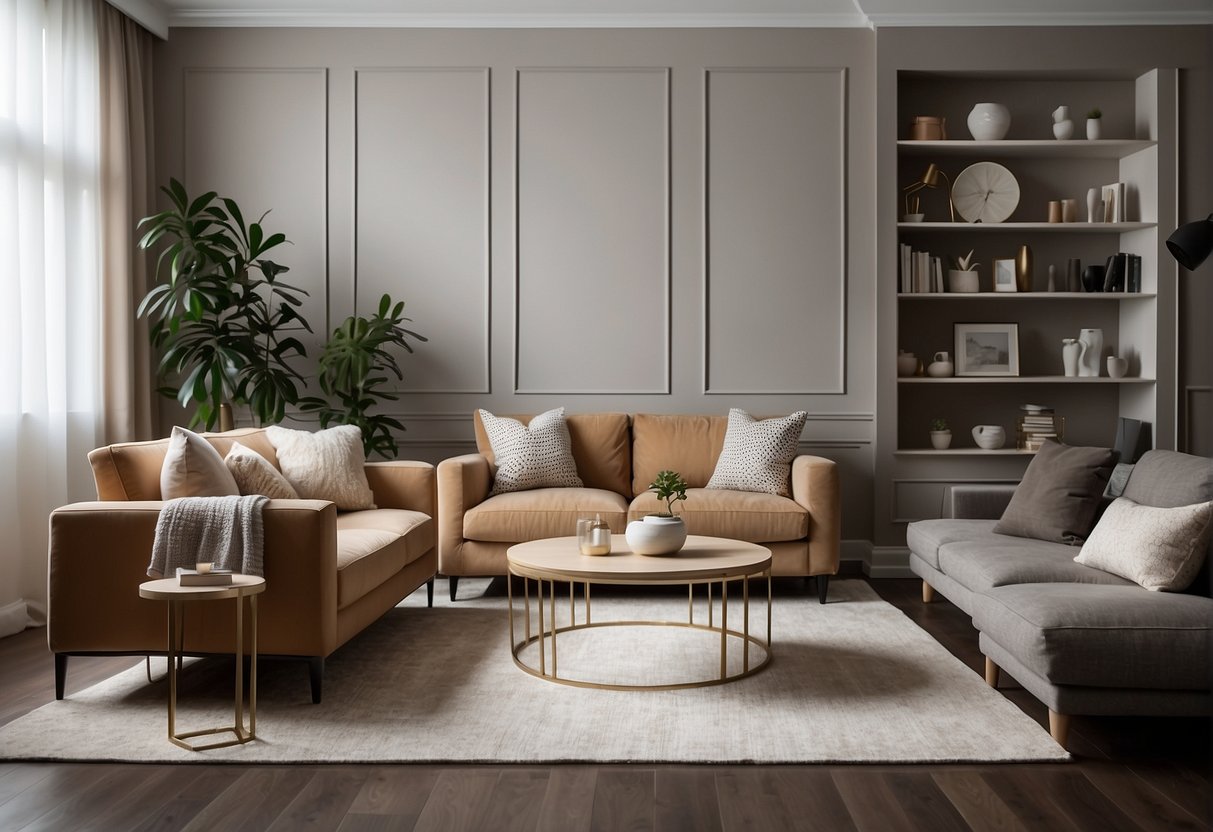
Staging the Living Room for Comfort
Creating a welcoming and cozy atmosphere in the living room is key. Start by decluttering and removing any personal items. Use neutral tones for walls and furnishings, and add pops of color with accessories like throw pillows or a statement rug. An easy-to-follow layout is essential for a comfortable atmosphere:
- Arrange furniture in a conversational layout
- Use mirrors to create a larger and brighter space
- Choose a focal point, such as a fireplace or large window
Kitchen Staging: The Heart of the Home
Kitchens are often considered the heart of the home, and buyers want a clean, functional space. To stage the kitchen:
- Clear countertops of any unnecessary items
- Ensure appliances are clean and functioning
- Bring in fresh flowers or potted plants
Don’t forget to set a welcoming table with coordinated dishware, placemats, and napkins. Adding a bowl of fresh fruit can instantly brighten the space.
Bedroom Staging for Relaxation
Make bedrooms feel like a peaceful retreat with a few simple steps:
- Ensure beds are made and have coordinating linens
- Add decorative pillows and a cozy throw
- Keep personal items and clutter out of sight
For a touch of luxury, add a small seating area or reading nook with a comfortable chair and side table.
Bathroom Staging: Clean and Fresh
Buyers are drawn to clean, updated bathrooms. Ensure a spa-like atmosphere by:
- Cleaning thoroughly, including grout and caulking
- Removing personal items and toiletries
- Displaying fresh, neatly folded towels
Use small potted plants or fragrant candles to create a welcoming environment.
Enhancing Curb Appeal
Don’t forget the exterior of your home. Boost curb appeal instantly by:
- Keeping the lawn manicured and garden beds tidy
- Adding colorful flowers or potted plants near the entryway
- Ensuring the front door is clean and freshly painted, if needed
By following these simple and cost-effective strategies for key areas, your home will make a great first impression and attract prospective buyers.
Finishing Touches
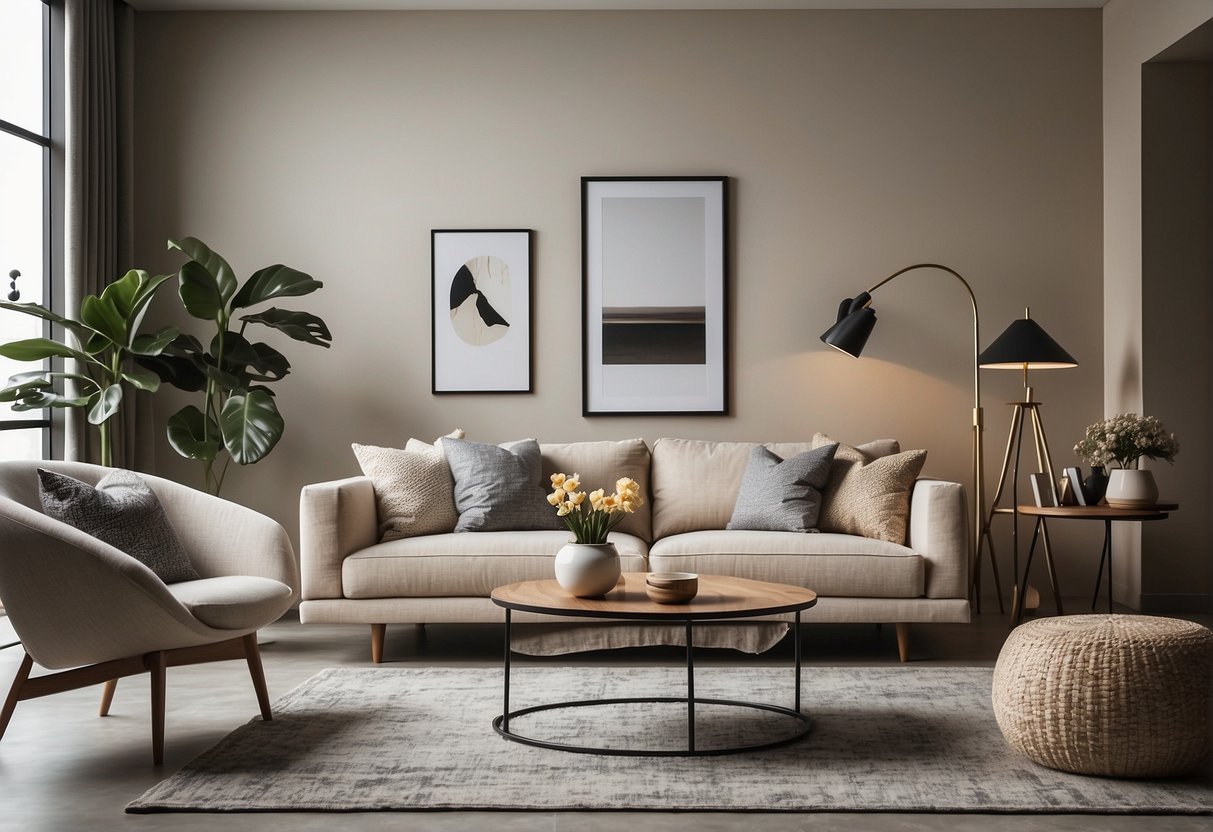
The Role of Scents and Sounds
A fresh scent can make a big impact in a home-showing scenario. Try using essential oils or scented candles to create a welcoming atmosphere. Keep in mind that scents should be light and not overpowering. Potential buyers may have allergies or sensitivities, so avoid overly fragrant options.
At the same time, pay attention to the sounds in the space. Soft, calming music can help put potential buyers at ease while they tour the home. Be mindful of volume levels and choose instrumental or neutral tracks to avoid distractions.
Setting the Stage with Lighting
Lighting plays a crucial role in home staging. Here are some quick home staging tips to make the best use of lighting:
- Maximize natural light: Remove heavy curtains or blinds and clean windows to let the sunlight in.
- Use a variety of lighting sources: Include a mix of ambient, task, and accent lighting to showcase the home’s features.
- Choose the right light bulbs: Opt for warm, energy-efficient LED bulbs to create a cozy ambiance.
Overall, the goal is to make the space feel bright, spacious, and inviting through strategic lighting choices.
Adding Life with Plants and Flowers
Incorporating plants and flowers is an excellent way to add life and vibrancy to any space. Here are a few suggestions for using them effectively in your home staging:
- Choose low-maintenance plants: Opt for hardy plants like succulents or snake plants that require minimal care.
- Add seasonal flowers: Fresh, seasonal flowers in vases can add pops of color and natural beauty to a space.
- Use silk plants and flowers: If you’re staging a vacant property or are allergic to real plants, high-quality silk plants and flowers can serve as an alternative.
Remember, the key is to enhance the space without overwhelming it. Stick to a few well-placed plants and flowers to create harmony and balance.
Cost Management for Home Staging

Budgeting for Staging
Creating a budget is essential when planning for home staging. It helps control expenses and prevents overspending. Begin by listing all anticipated costs, such as staging services, furniture rental, and other necessary items. Prioritize and allocate funds based on the overall impact on staging results. Be sure to also check out 19 Tips for Staging Your Home on a Budget for inspiration and affordable ideas.
Renting vs Buying Decor
When it comes to home staging cost, it’s crucial to consider the benefits of renting versus purchasing decor. Furniture rental can be a cost-effective method of obtaining stylish and high-quality pieces without the steep upfront expense. Renting allows flexibility, as items can be returned or exchanged more easily, while purchasing may result in accumulating unwanted furnishings. Compare the staging costs of renting to buying for striking a balance that suits your needs.
| Renting | Buying | |
|---|---|---|
| Cost | May be lower, based on duration | Upfront, often higher cost |
| Flexibility | Easier to return or swap | Commitment to purchased item |
| Storage | No storage needed | Storage may be required |
DIY Projects to Save Money
Opting for DIY projects can significantly reduce the cost to stage a home. Simple changes, such as decluttering, rearranging furniture, or updating hardware, can greatly enhance a home’s visual appeal at minimal cost. Explore budget-friendly staging tips for various DIY ideas to incorporate on a tight budget.
When necessary, consider engaging a full-service staging company to take care of more complex and time-consuming tasks. It will increase the overall cost, but it could also expedite the sale process and potentially boost the selling price.
Marketing Your Staged Home
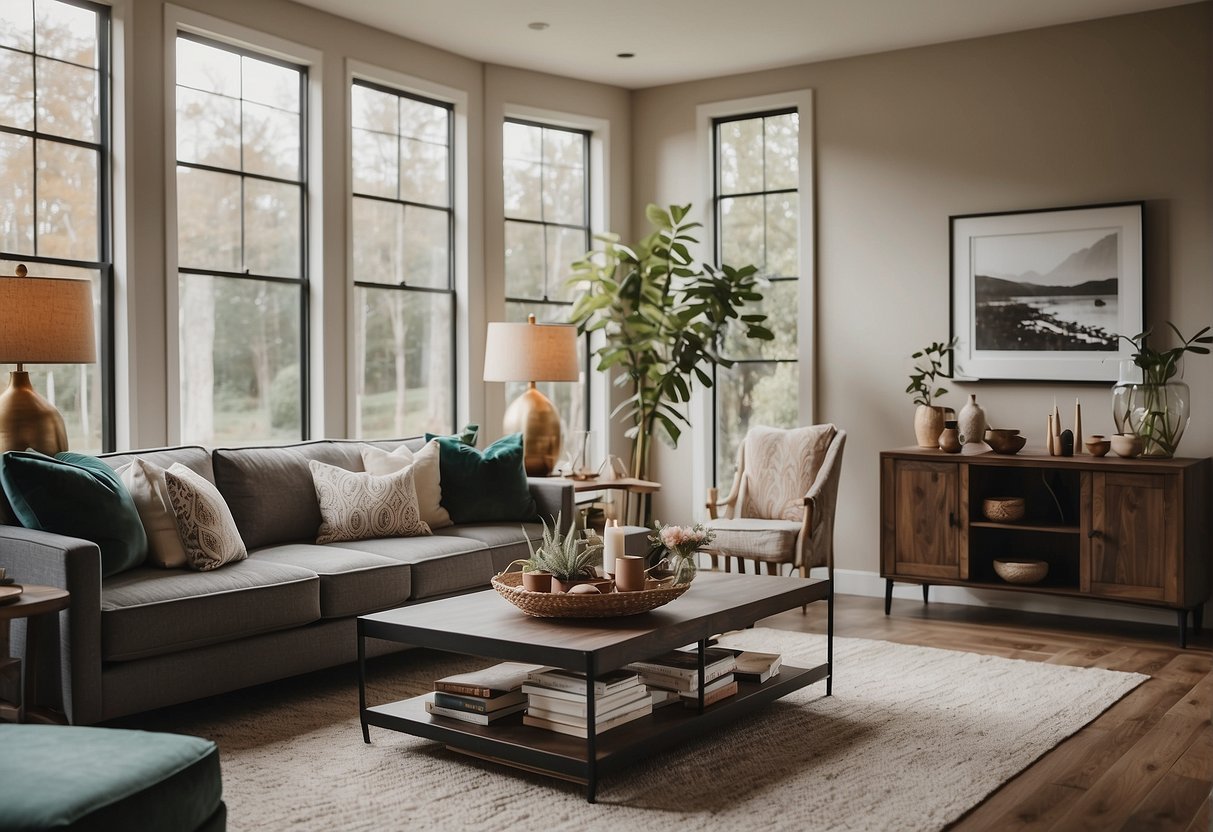
Photography and Virtual Tours
High-quality photos and virtual tours are essential in marketing a staged home. Hiring a professional photographer or using a good camera can make a significant difference in showcasing the property’s best features. Online platforms like Zillow and Realtor.com enable homebuyers to explore homes virtually, so make sure your listing stands out with exceptional visuals.
- Use well-lit photos to highlight each room, focusing on key staging elements.
- Capture different angles of each room to provide a comprehensive view.
- Consider adding drone photography for an aerial view of the property.
Virtual tours can further enhance the overall experience for potential buyers. These interactive walkthroughs allow viewers to explore the staged home remotely, giving them a more realistic feel of the space.
- Create a 3D virtual tour for a more immersive experience.
- Keep the tour brief and simple, focusing on the standout features.
Real Estate Marketing Strategies
Realtors and real estate agents play a crucial role in marketing your staged home. They possess industry knowledge, expertise, and access to tools that can put your property in front of qualified buyers. Collaborate with a skilled agent to develop a customized marketing strategy tailored to your needs.
- Utilize your real estate agent’s network to reach more potential buyers.
- Leverage social media platforms like Facebook and Instagram to share images and virtual tours.
- Use targeted advertising to reach your desired audience.
Local events and open houses can be an effective way to introduce your staged home to potential buyers. However, with the ongoing pandemic, virtual open houses are becoming more popular. Work with your real estate agent to ensure a seamless online experience for interested parties.
| In-Person | Virtual | |
|---|---|---|
| Format | Scheduled visits with a limited guest list | Live or pre-recorded video tour, Q&A session |
| Venue Preparation | Clean, well-lit, and staged | Ensure internet connectivity, adequate lighting, and virtual tour access |
Remember, the goal is to showcase your staged home in the best possible light. So, collaborate with your realtor and make use of these marketing strategies to attract the right buyers and secure that sale.
Luxury Specialist at McGraw Realtors
With a diverse background, including a career as an Air Force fighter pilot and entrepreneurship, Bill transitioned to real estate in 1995. Co-founding Paradigm Realty with his wife, Charlene, he quickly rose to prominence in Oklahoma City’s luxury real estate scene. Now, as one of the top agents with annual sales surpassing $20 million, Bill’s dedication to exceptional service remains unparalleled. With a legacy spanning over two decades in the industry, Bill’s expertise and commitment make him a trusted name in luxury real estate.